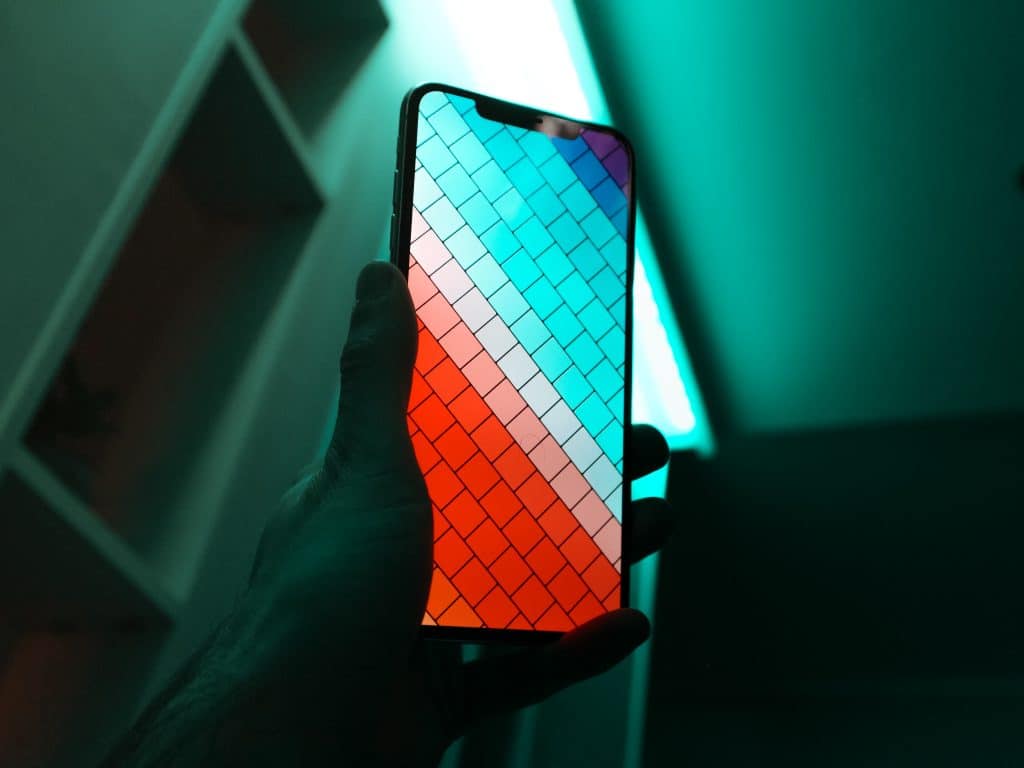What Is the Future of Mobile App Development
Simplify whatever possible to make UX maximally organic in the interactions between mobile users and apps. This is a mega-trend of mobile development nowadays. As a complex phenomenon, it comprises numerous sub-trends of app development: cross-platform development to simplify validation of business ideas, chatbots to simplify interactions with users, mobile wallets to simplify payments, etc. The majority of them are hardly revolutionary-new, having a transitory character moving from the recent past through the existing present to the predictable future.
The problem is in the pace with which both business owners and mobile app developers have to change to be part of popular trends. Reaching some kind of accord on the fly to stay competitive is always hard. However, unlikely there is a need to implement all trendy features into your mobile apps. Being capable of recognizing which direction the app market tends to move is more important. In this post, we try to analyze what awaits us in the nearest future of mobile app development.
The current status of mobile development
Continuity is what determines the principal direction of mobile development. It means the future mobile apps have roots in today's events and technologies. All booming mobile trends such as AR, AI, IoT, and the like appeared not just this morning. All of them have a more or less long history. The current mobile trends will unlikely disappear tomorrow as well. They will evolve into new ones keeping a technological legacy amid upcoming challenges of users' needs.
That's why we can see some sort of evolution in mobile app development in which true disruption is a very rare occasion. Even unexpected social events can just add momentum to the already existing mobile trends. Undoubtedly, the COVID-induced lockdown has appeared as the most influential social phenomenon since 2019. The mobile development sector could hardly remain indifferent in the face of that global disaster.
However, the COVID-19 pandemic has not required unprecedented mobile solutions from developers. New social norms have just strengthened what has been inherent in mobile development since day one. The very mobile paradigm has highlighted what can be defined as the motto of lockdowns – stay remote! Therefore, today's trends of mobile app development meet people's needs by making various remote activities simpler, easier, and more user-friendly.
Anticipated changes in mobile development: Why is it important to think ahead?
Even though nothing absolutely new is predicted to appear in mobile app development in 2022, it is worth focusing on the trends that can be in greater demand on the market. Demand always creates supply, right? The more popular a certain type of mobile apps becomes the more developers start competing in such a domain.
Since time-to-market determines a winner in the competition today, cross-platform mobile development is becoming more and more relevant to launch MVPs and check business ideas in practice.
The fight for users' attention will only intensify with time once the number of mobile users keeps growing. The startup time of an application becomes crucial for conversion, therefore. That's why progressive web applications with their quick launch seem to be driving out mobile apps on the market.

What can be more traditional for mobile apps than messengers? But the success of Clubhouse demonstrates how this domain can get a second wind being addressed from the live-streaming angle.
No one in their right mind would think of competing with mighty YouTube in video content. Nonetheless, TikTok is becoming a real threat to the global video behemoth since clip-thinking younger generations are satisfied enough with just few-second amateurish videos.
All the above-mentioned cannot be called the future trends of mobile development in the fullest sense. We just see small hints at what is worth paying attention to in the never halting app market. Forecasting is always a thankless task, but thinking ahead is the compelling need not to throw up our hands in despair when another Clubhouse disrupts the global app market.
What trends will affect mobile development in 2022
Trends behave like rivers: the more water replenishes the river the wider and stronger the river becomes. Flows of users' interest along with golden rains of investment replenish a particular trend to make it dominating in minds of both entrepreneurs and mobile developers. All the other rivers can unlikely disappear at all, they will keep running in parallel becoming narrower and weaker for a while. Let's observe the ones that are going to be the most full-flowing in next year's mobile app development.
1. Super apps
One of the most promising trends nowadays is large multipurpose applications that comprise various functions all-in-one. Traditionally, every mobile application has been developed to satisfy a certain need of users: communication, logistics, a certain sort of service, etc. Even if we take a particular sector such as healthcare, for instance, different narrow-specialized apps cover separate healthcare domains: fitness, healthy food, anti-sedentary lifestyle, etc.
Today, mega applications capable of covering the whole spectrum of tasks are gaining popularity. This is about creating environments within which all possible needs of users can be satisfied more or less completely. The consumer logic is simple here: it is more convenient to use one application able to perform 10 tasks than to install 10 apps able to perform 1 task each.

The trend goes counter to the capitalism-inherent culture of the division of labor: the narrower the specialization of your business is, the more successful the business goes. However, the recent tendency towards acquisitions, merges, and various consolidations starts dictating a new corporate business style. Capital is getting larger to pave the way to post-capitalism for huge corporations. "The larger the better" is the motto of all contemporary business leaders: Facebook, Amazon, Alibaba, and the like all are mega corporations doing their best to cover as many business sectors as possible.
It seems consolidation is to be the long-lasting trend of future mobile app development. The trend has not come out of nothing: Asian super apps show the way. The Chinese super app WeChat has turned to be the entire mobile industry for Chinese consumers: almost nothing is left to be installed on their smartphones beyond WeChat.
Being born in Asia with WeChat, Alipay, and Gojek, the trend is moving west to have pioneers on the American mobile market: the multipurpose application Natural.Ai allows you to order food, pay bills, book a hotel, and do many other things with a single interface. The Western World will be covered with a wave of super apps sooner rather than later.
First, we are going to see quite raw multifunctional apps covering communication and finance only. Facebook having Amazon's features and Amazon with Facebook's capabilities seem to be such hybrid solutions. Over time, in the course of competition getting fierce, the fully-fledged Western super apps will have to appear. And it won't be long to wait: the potential user coverage (and, therefore, income) is mind-blowing. Such a piece of pie is worth fighting. Indeed, super apps can be safely called the number-one trend in mobile app development 2021-2022.
2. Counter-fake solutions
Desperate manipulation of facts has become the hallmark of the media in the 21st century. Fakes are masquerading as real events while the truth is exposed to various misinterpretations. People may question the veracity of stories appearing on news websites, but social media has almost nothing to resist biases and fakes. Usually, we have no time to perform fact-checking for whatever we see on our Facebook walls. This is how falsehood is taking root in our routines.
That's why one of the burning trends of mobile app development is the implementation of fact-checking algorithms into social media apps. Media platforms have to create new techniques aimed at separating the wheat from the chaff. It seems the only viable approach implies hiding fakes from social media users. But it is necessary to detect false info first of all.
AI-based cross-checking solutions are in demand to validate data in social media. This is about automated algorithms since the volume of data is far beyond human capabilities to process. Millions of fake posts appearing on social media every minute require anti-fake filters to be established by reputable social media apps. Twitter and Facebook have been doing the first tentative efforts in this direction. But a purely counter-fake mobile solution is still waiting to go off.
3. Security and anonymity
Many commercial projects collect the personal data of users. Even though the objective of such data collection is to improve services, the majority of users have concerns about the risk of leakages. Besides, some social media giants are infamous for personal data leakages. People start feeling a kind of around-the-clock surveillance. This triggers mistrust of many IT projects that collect users' data for various purposes.
The need for stepping up the security of personal data is becoming self-evident. Truth be told, the trend is not new: many technological achievements such as 2-factor authentication, face recognition, and fingerprint login have long been practiced by mobile developers. Nonetheless, the data protection issue has not gone away and the trend seems to remain relevant in mobile app development for a while.

One of the most promising data-protection technologies is DLT (distributed ledger technology). The majority of people know just one sort of DLT – blockchain. Blockchain works in cryptocurrencies to protect transactions against the so-called double-spending problem. Every block of information is protected by a special cryptographic algorithm while building a chain of blocks is performed through mathematical-based distributed validation.
Cryptographic encryption is probably the most advanced method of data protection in digital. DLT-based digital passports and certificates can be neither forged nor falsified. This is just technically impossible. Why not use DLT for mobile apps to make personal data invulnerable to identity theft? The trend is clear: the one who can offer a bullet-proof mobile solution for sensitive data security will win the jackpot in the still existing environment of data leakages.
4. Touchless interfaces
We have already mentioned today's mega-trend of mobile development – simplification of whatever is possible in the interactions between users and apps. Minimization of efforts to use smartphones is what simplification is about in our context. This refers to interfaces most of all. The traditional graphic interfaces with their plain design are reaching their limit nowadays: we cannot make them any simpler. But the request for more organic interactions with gadgets remains as it is. Moreover, the accelerating pace of life encourages mobile developers to create new sorts of touchless interfaces.
Voice-driven interfaces constitute one of the two promising touchless solutions available nowadays. Another one implies gestures to control smartphones. Both approaches have already been applied to touchless control in varying degrees. At the same time, they both are far from exhausting their capabilities in terms of the touchless usability of mobile gadgets. By the way, the notorious COVID has added fuel to fire as well: don't touch your phone – stay away from viruses!

Voice assistants such as Siri and Alexa represent the basement upon which fully-fledged touchless interfaces can be built. Voice assistants have two main advantages: they do not occupy much space on the screen, and they need no manual action to be activated. What can be more natural for humans than speech control? Only thoughts can be, probably. But brain-driven interfaces belong to sci-fi experiments rather than to mass implementation on the consumer market.
Gesture control has two directions to evolve: the variety of physical gestures such as tapping the smartphone's back cover to activate one or another function, and interactions with virtual objects in VR/AR interfaces. The latter one implies using some different gadgets than classic smartphones: VR glasses or even contact lenses.
Touchless UI is definitely the future of mobile app development. The trend is so appealing that both users and developers cannot resist its promise in 2022.
5. Neomorphism in design
Trends in future app development cannot circumvent aesthetic issues in UI design. The plain UI with minimalistic elements is considered standard in apps' design while laconicism in data display is a norm. However, designers keep looking for new forms of interface decoration. One of them implies neomorphic elements that look touchable.
Neomorphism allows imitating three-dimensional objects aimed at strengthening aesthetic impressions from software products. Such an approach, nonetheless, makes UI more difficult to scale. That's why pure neomorphism rarely takes place in mobile app development. But mostly, pseudo-3D elements are added to plain minimalistic interfaces.
In general, not only aesthetic considerations stay behind the neomorphic design. This follows the major mobile trend of making interactions between users and apps more pleasurable and simple.
How to adjust your SaaS solution development to market and technology changes?
Software-as-a-Service will remain a wide road to go for projects in both mobile and desktop development. In terms of the app development process, all new trends are particulars while the SaaS approach is something general that embraces anything else. SaaS is technology, and any technology can be adjusted to meet one or another current trend.
If you take a look at multipurpose super apps such as Alipay and WeChat, their enormous functionalities hint at the SaaS origin. This resonates well with their cloud computing which is beyond question: any on-premise infrastructure is incapable of coping up with the number of transactions taking place in super apps.
If your objective comes to an anti-fake solution, the cross-checking capabilities of counter-fake filters can find easier implementations just in the SaaS-inherent features. Besides, neurolinks making possible deep analysis through machine-learning methods usually reside on the infrastructures created under SaaS.

Applications focused on data security can hardly bypass blockchain nowadays. And blockchain-based solutions meet the SaaS paradigm in a way that little else does. The very name of distributed ledger technology clearly points to the SaaS development method.
Very promising touchless interfaces can unlikely be a thing created from scratch. Moreover, voice assistants such as Siri from Apple require quite complicated coordination of technologies that correspond to SaaS rather than to native on-premise solutions.
In other words, whatever fresh trend appears on the horizon of mobile development, the SaaS approach with its unprecedented flexibility and short time-to-market appears to be the most appropriate method of app development. It is always worth addressing mobile trends through the SaaS lenses to stay competitive in the present business environment.
DICEUS expertise in mobile app development
To find out whether one or another mobile development company belongs to true professionals is easy: real experts know everything not just about mobile apps but about all existing mobile platforms. In contrast to the majority of mobile developers on the market, DICEUS can boast deep expertise in quite specific platforms such as Chrome OS, Tizen, and Ubuntu Touch, not to mention Android and iOS.
The second criterion of outstanding competence implies a profound vision of the technologies that cover the entire mobile app development sector. It is crucial to understand what the contemporary market requires from both the apps' owners and developers. This is why DICEUS focuses on cross-platform and hybrid applications that appear to be more feasible in the current status of the mobile market.
Another characteristic that distinguishes true professionals from the rest is forward-thinking capabilities that allow forecasting which trends the future mobile app development will follow. In this regard, DICEUS is not reluctant to invest time and resources into mastering exotic technologies such as blockchain (which is not exotic in fact, but an essential element of zeitgeist). Besides, the breadth and diversity of industries among which DICEUS feels confident can tell a lot about the skills our engineers have possessed.
Guaranteed software project success with a free 30-minute strategy session!
Get started
What Is the Future of Mobile App Development
Source: https://diceus.com/future-of-mobile-apps-trends/
0 Response to "What Is the Future of Mobile App Development"
Post a Comment